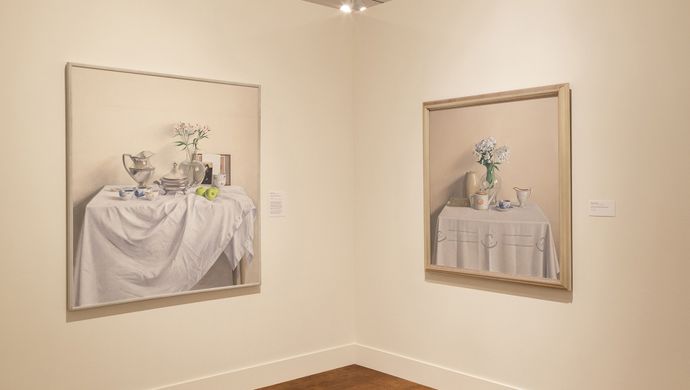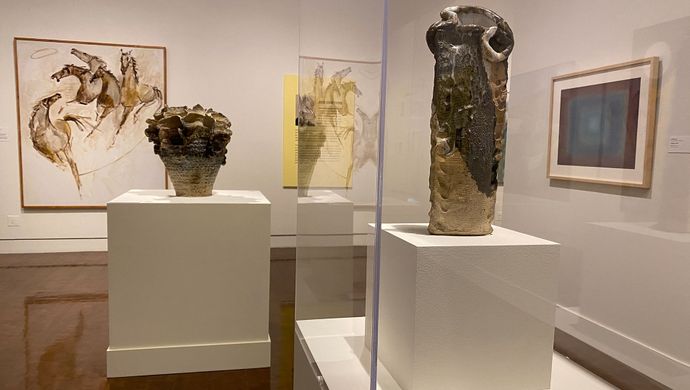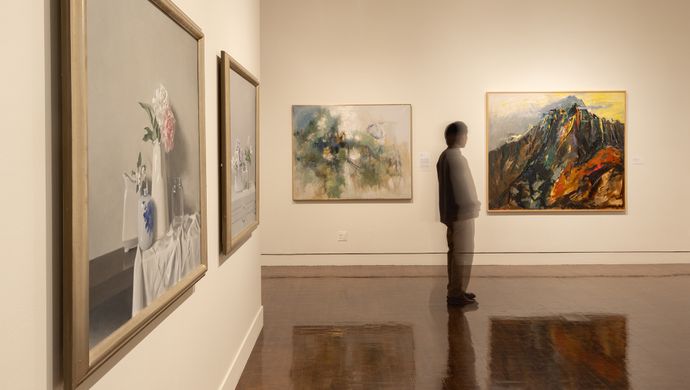 Story
Story
Tiger Tales: Art in times of war
This is the third post in a series of stories that take you behind the scenes of the exhibition Home of the Tigers: McKinley High and Modern Art, on view through January 12, 2025.
Rojas Silva points to Japanese American artists Robert Kobayashi, Ralph Iwamoto, and Keichi Kimura, who all served in World War II. Kobayashi earned four medal citations as a member of the 778th Tank Battalion. Iwamoto served two years in the Military Intelligence Service. And Kimura was a member of the famed 100th Battalion of the 442nd Regimental Combat Team in Italy and France. A generation later, Imaikalani Kalahele was drafted into the Vietnam War.
“I find it so interesting that although they are a generation apart and participated in different wars, Keichi Kimura and Imaikalani Kanahele both created art during the time they were at war,” says Rojas Silva.
In the exhibition are two watercolors Kimura painted in Europe, one of a red-tile-roofed town with a snowcapped mountain in the background and the other of a road curving through a village. Dubbed his “backpack paintings,” it is a miracle they survive.
Kalahele counts his two McKinley High School art teachers, Minnie Fujita and Charles Higa, as two of his most significant kumu, as he calls them. The budding artist also took classes at the Honolulu Academy of Arts (now HoMA), where his teacher was the influential Louis Pohl. When Kalahele was in Vietnam, he wrote a letter to Pohl describing how difficult the situation was there. In response, Pohl put together a care package of art supplies and sent them to Kalahele who gratefully used them.
Seeing a relationship between the two artists, Rojas Silva and Cann laid out the exhibition so that as you navigate through it, you move from Kalahele’s work to Kimura’s, allowing you to experience the connection.
“Both of these artists from such different backgrounds actually produce art during their time at war, perhaps to help them overcome the challenges, to understand that period in their lives, or to just get a break from what they were doing,” reflects Rojas Silva. “There are connections between these artists that go beyond their shared high school experience.”





